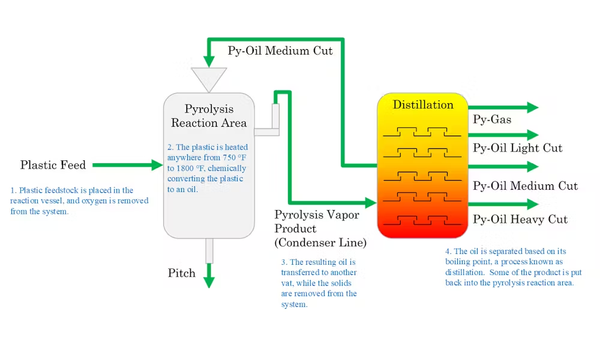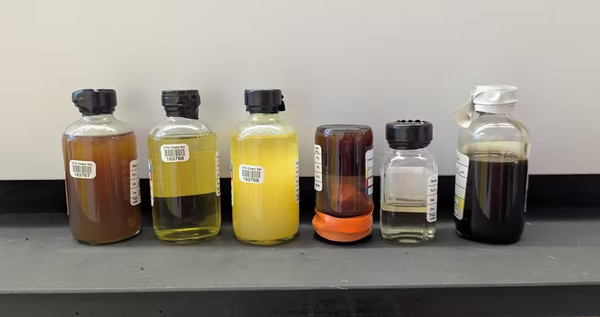Waste plastic pyrolysis company completes $50 million in financing!
Recently, the US waste plastic pyrolysis company Freepoint Eco-Systems announced that its plastic waste recycling facility in Hebron, Ohio, has completed a $50 million non-recourse project financing. The term loan was underwritten by ING Capital LLC (“ING”) and is the first of its kind for hard-to-recycle plastics in the plastic recycling sector.

Freepoint's Hebron plant project broke ground in December 2022, initially planned to start in 2024. The company said that the plant, covering 25 acres and utilizing an existing 260,000 square foot warehouse, is planned to have a capacity of processing 90,000 tons of waste plastic annually.
It is worth mentioning that in May 2024, Dow and Freepoint Eco-Systems announced a supply agreement to convert plastic waste into new circular products.
Plastic pyrolysis is a chemical process in which plastic is heated to extremely high temperatures under oxygen-free conditions, chemically decomposing the plastic into other molecules. The main types of plastics processed include post-consumer plastics such as plastic bags, bottles, milk jugs, packaging materials, wet wipes, and even discarded children's toys. Additionally, it can also process tires and electronic products.
It is worth mentioning that polyvinyl chloride (used in pipes and roofing products) and polystyrene (used in packaging) are often avoided or reduced by recyclers in pyrolysis because these plastics produce harmful by-products during the pyrolysis process, making them one of the most difficult waste plastics to chemically recycle.
Charcoal is the solid residue left at the end of the pyrolysis process. It can be used as a carbon-rich material for various purposes, including adding it to the soil to make it more suitable for cultivation, as it can increase soil moisture and pH, which is beneficial for nutrient absorption. Charcoal also has the ability to absorb harmful carbon gases from the air, which helps prevent climate change. However, the main disadvantage of charcoal is that if used in excess, it can increase soil alkalinity, thereby hindering plant growth.

pyrolysis process
Image source: the internet
Currently, about 15% to 20% of pyrolysis products are recycled into new propylene and ethylene, while the majority (about 80% to 85%) is converted into diesel, hydrogen, methane, and other chemicals.
Although plastic pyrolysis has certain prospects, it also faces challenges. The cost of establishing and operating a pyrolysis plant is very high. The profitability of the process depends on the availability of suitable plastic waste, the market demand for the produced oil and gas, as well as the energy and personnel costs required to operate the reactor.
Another issue is quality control. Most types of plastics can be pyrolyzed, but the oils produced from different plastics have different chemical compositions. After pyrolysis, it is necessary to understand the composition of these oils before determining which types of plastics to focus on and how each oil can generate new materials.
However, as more research is conducted on the efficiency of this technology and technological advancements expand the scale of pyrolysis, this technology may become part of a sustainable solution for future plastic waste management.

pyrolysis oil
【Copyright and Disclaimer】The above information is collected and organized by PlastMatch. The copyright belongs to the original author. This article is reprinted for the purpose of providing more information, and it does not imply that PlastMatch endorses the views expressed in the article or guarantees its accuracy. If there are any errors in the source attribution or if your legitimate rights have been infringed, please contact us, and we will promptly correct or remove the content. If other media, websites, or individuals use the aforementioned content, they must clearly indicate the original source and origin of the work and assume legal responsibility on their own.
Most Popular
-

List Released! Mexico Announces 50% Tariff On 1,371 China Product Categories
-

Nissan Cuts Production of New Leaf EV in Half Due to Battery Shortage
-

New Breakthrough in Domestic Adiponitrile! Observing the Rise of China's Nylon Industry Chain from Tianchen Qixiang's Production
-

Dow, Wanhua, Huntsman Intensively Raise Prices! Who Controls the Global MDI Prices?
-

Mexico officially imposes tariffs on 1,400 chinese products, with rates up to 50%






